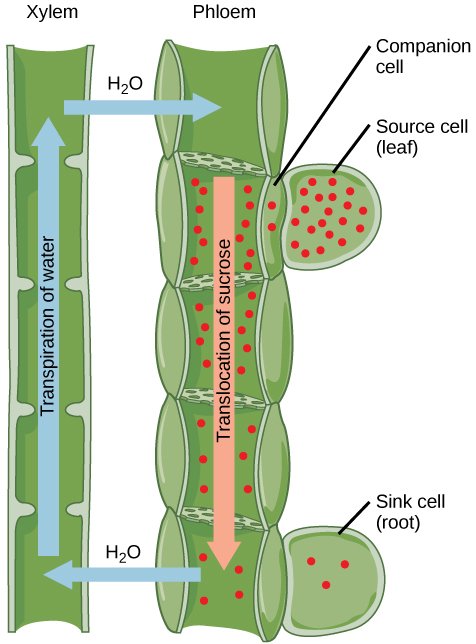components of the transport system in highly organised plants
There are two types of transport systems in a higher plant
- a. Water and mineral transport which consist of Xylem, root, and stomata.
- b. Food transport system which consists of Phloem and companion cells.

Functions of the components:
Xylem: Xylems are narrow vessels which connect roots to the leaves. Through these vessels, water and minerals from the root are transported to all parts of the body.
Root: Root actively absorbs mineral ions and water from the soil. Plant absorb minerals actively, and water flows inside into the root due to the concentration gradient of minerals. This is called root pressure theory.
Stomata: Root pressure itself cannot move minerals and water to higher plants of big sizes. A stoma is the small pores between stomatal cells through which gaseous exchange takes place. We call this process transpiration. Transpiration creates a pulling pressure on water and minerals present in xylem. As a result, water moves up to the leaves which require water and minerals for photosynthesis.
Phloem: Food materials synthesised in chloroplast and amino acids can not move by itself. Phloem has companion cells and sieve tubes. Companion cells spend energy in the form of ATP and load the food and amino acids into the sieve tubes. It increases the osmotic pressure inside the tube. As a result, water moves in. Tissues which need food have low food contents and lower osmotic pressure. As a result, food moves from the tubes and reach the part which needs food. Roots and fruits act as storage organs and store excess food.
Next: How are water and mineral transported in plants?
See also: Why is it necessary to separate oxygenated and deoxygenated blood in mammals and birds?
Ref: Chapter 6 Life processes NCERT class 10.
What are the components of the transport system in highly organised plants